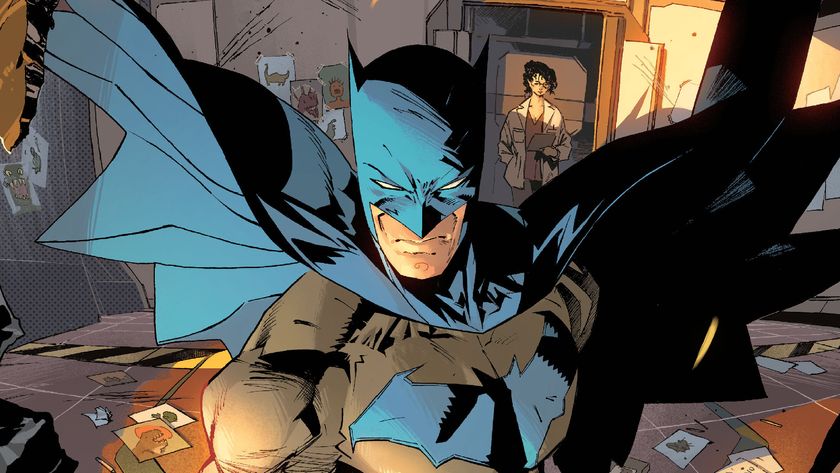Why would you lock 999 women and one man underground? The secret history of Fallout's human test vaults
Only 13% of Fallout’s vaults were built to save people from nuclear disaster - the rest were used to perform cruel, bizarre and hilarious social experiments
Fallout’s atomic protection vaults seem like an obvious thing to build in the face of unavoidable nuclear war: a series big underground bunkers to keep people alive as the bombs drop, then wait it out for a do-over when the air isn’t quite as face-melty. Except that’s not really what it was all about. The vaults were about saving humanity, kinda, but not necessarily people.
You see, there were two kinds of vault. Control vaults, like Fallout 76’s Vault 76, did the job of keeping people alive. But only 17 of those were ever made; all other vaults existed as nothing more than experiments to collect data as part of a ‘Societal Preservation Program.’ They were designed to have a flaw, a problem or… something, to test the inhabitants. Often in fatal and cruel ways.
The vaults were never meant to save anyone
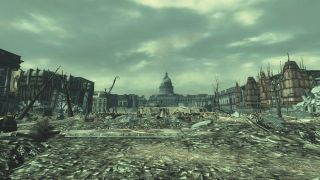
This is a well known part of Fallout history but its origins have really been lost in the mix and, oddly, it’s never been explicitly stated or explained in the games. Fallout 3 and Fallout 4 make it clear the vaults are conducting experiments, refer to Vault 76 as one of the ‘control vaults’ and even reference or quote parts of the original 1990s games’ design documents. But the actual information and clarification as to why any of this was happening never actually made it into a game.
To find out why the vaults were essentially glorified torture boxes you really have to poke around early, and largely lost, lore - specifically the original developer Black Isle Studios’ design documents for Fallout 1 and 2, as well as Van Buren, Black Isle’s codename for its cancelled version of Fallout 3. Investigating old documentation and cut content reveals that the real plan to ‘save’ humanity was to either repopulate the Earth from elitist ranks that considered themselves a pure genetic line, or take them to a new planet in a spaceship.
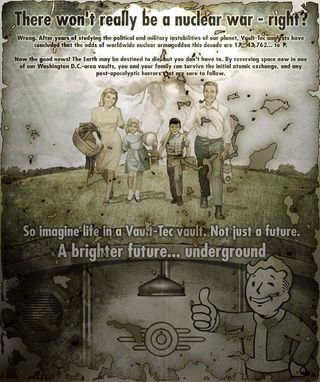
The rest of humanity were little more than lab rats, with the vaults used either to test situations survivors expected to face (hence things like Vault 53 where everything broke down all the time), or provide things needed to rebuild (super soldiers, eugenics and disease cures; Vaults 92, 75 and 81 respectively). Some, mentioned only in unused design documents, were just plain weird: Vault 70’s clothing machines broke after six months, Vault 36 had no food save “a thin, watery gruel”, 27 was deliberately overcrowded, 19 was split into two teams: ‘Red’ and ‘Blue’ and, perhaps the cruelest of all, Vault 42 only had 40 watt light bulbs.
This was all the Enclave’s idea - the post-apocalyptic remnants of the US government - whose members originally funded the vaults before the war. But there was never any intention to use them as advertised. In the Fallout universe, the US population was around 400 million in 2077 (the year the Great War broke out), which would have required 400,000 max 1000-capacity vaults. The government built 122, some of which only housed a few hundred. Chris Avellone, a designer on 1998’s Fallout 2 on PC, the unreleased Van Buren and Fallout: New Vegas, wrote in the original Fallout Bible (a reference document gathering together all the background history, story and lore) that the “real reason for these vaults was to study pre-selected segments of the population to see how they react to the stresses of isolationism and how successfully they re-colonize after the vault opens.”
A new beginning
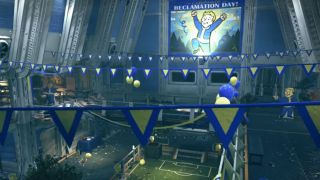
This was something you were originally meant to discover in Fallout 2’s Vault 8, according to Avellone: "It was intended that while the player was reading the Vault 8 records in Fallout 2, they could discover a classified file which explained that Vault 8 was a ‘control vault,’ This was intended to foreshadow the discovery of the true and sinister purpose of the vaults." The actual passage that was eventually cut from the game reads as follows:
Sign up to the 12DOVE Newsletter
Weekly digests, tales from the communities you love, and more
“Incredibly, all 122 of Vault-Tec's public vaults were part of a grand social experiment orchestrated by the US government. Only 17 of those vaults, dubbed ‘control vaults’, were designed to function correctly (it seems Vault 8 was one of the lucky few). The rest were meant to have various critical flaws, so that the government could study the pre-selected occupants, and see how they react to the stresses of their situations, and how well they're able to re-colonize once their vaults open.”
This “true and sinister purpose” was originally intended to be followed up in some of Van Buren’s missions like ‘Bloomfield Space Center.’ Here the player could discover factions trying to launch a rocket. In the original design outline it mentions the Enclave took control of this area in 2076: “They knew nuclear war was just around the corner, so they tried to refit the Hermes-13 and convert it into a vehicle that would take selected personnel (mainly themselves) off-planet, destination yet to be determined.”
The rocket was all but ready to launch before the bombs dropped, but with the Great War all but starting budget was redirected into building more vaults. The plan at this point in the lore seems to be the Enclave would wait out the war on their oil rig off the Californian coast (as well as their own private vaults) collecting all the data from the public vaults to plan for leaving the planet.
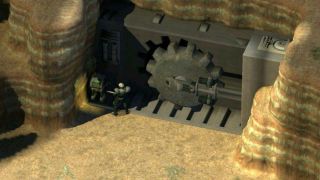
Van Buren (above), also contained Vault 29, a vault deliberately populated entirely with children to be raised and shaped into a nature-loving, technology-free primitive culture. The idea being this culture might have a greater chance of survival with less dependence on technology. While Van Buren was never released, Vault 29 is where Harold, the tree you meet in Fallout 3’s Oasis, originally came (before he was a mutant tree obviously). Twin Mother’s, the post-apocalyptic civilisation Vault 29 went on to build, is also mentioned briefly in Fallout: New Vegas.
"Cut content from Fallout 1 and 2 is considered non-canon, despite crucial parts forming the basis for Bethesda's take on the series, which is considered canon"
Despite the references and nods to this original, late 1990s lore, it’s debatable how much of this stuff counts anymore. While some elements are widely accepted as no longer canon, there’s never really been an official verdict, more a case of fans making their own decisions - cut content from Fallout 1 and 2 is considered non-canon, despite crucial parts forming the basis for Bethesda's take on the series, which is considered canon. Plus there are lots of threads that unravel between all the cancelled content and game prototypes - Black Isle had earlier, canned versions of both Fallout 2 and 3, for example. And, while story elements that allude to the vaults’ true purpose never made it into the final cut of Fallout 2, Van Buren continued to roll with many of the original concepts and several of it's developers went on to make Fallout New Vegas incorporating some of the Van Buren's concepts and ideas.
Bethesda has never explicitly confirmed how much of the original Black Isle history stands and what’s fan service. The 2008 Penny Arcade cartoon ‘One man and a crate of puppets’ used to promote Fallout 3 (and created with then lead designer Emil Pagliarulo) reiterates the idea that the vaults were a social experiment that were never meant to save anyone. Most crucially it quotes the original Fallout bible when saying they were “designed to study pre-selected segments of the population”.
Both Fallout 3, 4 and 76, have also made it clear Vault 76 is a ‘control’ vault, apparently further confirming the lore of the previous games. While an entry on a Vault-Tec Regional HQ terminal in Fallout 4 also says, “Dr. Reid is beginning to get on my nerves. All he talks about now are his theories on how the vaults were built to run experiments on people, and not actually help them at all.” All of which suggests the lost lore and explanations stand, in which case, what were the worst things the Enclave did in order to collect data? Okay, [deep breath] here we go...
Vault 11
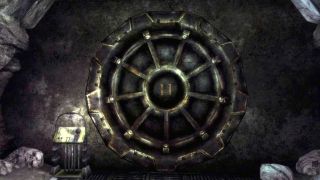
Yearly sacrifices (Fallout: New Vegas)
Once this vault was sealed, its Overseer informed the population that unless they sacrificed one person a year everyone would die. People took that badly and immediately nominated the Overseer as the first victim. That led to years of perverse elections where people desperately campaigned to not be Overseer, as political groups grew up around nominating their enemies. Eventually one Overseer instigated random selection instead, which started a civil war between the groups. When it was over, five people survived who refused to make a sacrifice. When that happened an automatic message played congratulating their “shining commitment” to human life, and the vault opened. Messed. Up.
Vault 68 and 69
999 men and one woman, and 999 women and one man, respectively (Fallout Bible and Fallout 2 cut content)
Both these vaults were only ever referenced in the Fallout Bible and cut content from Fallout 2 via computer files the player could access. Vault 68 was to be inhabited by 999 men and one women, “you can only imagine the horrors that took place there,” the terminal entry original said. While the reverse Vault, 69, had 999 women and one man, and was described as “interesting’. What this was meant to test is never revealed.
Vault 12 and 6
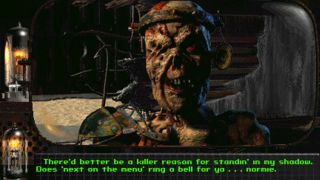
Radiation testing (Fallout and the unreleased Fallout Extreme)
If you ever wondered where all the ghouls game from (Fallout’s radioactive zombies) then it was from the Enclave testing to see what radiation did to people. Result: radioactive zombies. Vault 12 was part of a mission in the first Fallout game and was built with a faulty door that wouldn’t close properly. The irradiated population went on to become ghouls and found the city of Necropolis. Vault 6 on the other hand, just let a small amount of radiation in every day and had much the same result.
Vault 55 and 56
No entertainment and only bad entertainment, respectively (Fallout Bible and Fallout 2 cut content)
Possible the most evil vaults of all, 55 was to have “all its entertainment tapes removed” while 56 would have “all its entertainment tapes removed, with the exception of one featuring a particularly bad comic actor” This was originally to be discovered cut Fallout 2 stuff with the Fallout Bible adding “sociologists predicted [Vaults 56’s] failure before Vault 55.”
Vault 87
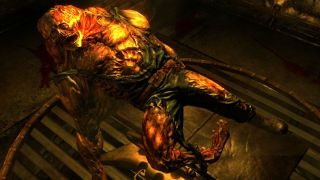
Human genetic testing (Fallout 3)
The Vault 87 records sound noble enough, with talk of work to “advance human genetics”. But what that actually meant was was using its inhabitants as test subjects for the Forced Evolutionary Virus (or FEV), the gene wrecking macguffin that gave us Super Mutants, Ghouls and more. Fun fact: most mutants in the game are due to FEV, not radiation. Although not fun if you were one of the innocent people ‘diagnosed’ with a condition by the medical staff and taken away for experimentation.
Vault 92
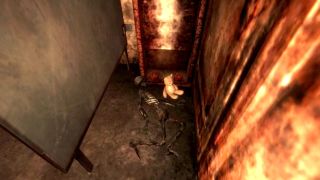
Subliminal super soldier creation (Fallout 3)
While the outward appearance of this vault was one created to preserve musical talent, it was really a cover. This vault was actually built to create super soldiers via ‘White Noise Mind Suggestion Combat Experimentation.’ People were fed unconscious messages designed to make them into the perfect killing machines the Enclave thought it would need after the war. Except they all went mad. And murdered everyone.
Vault 95
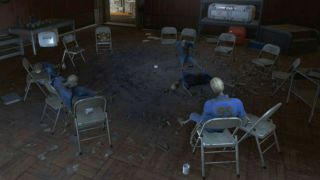
Full of addicts. And drugs (Fallout 4)
This vault might have seemed altruistic but it’s addiction rehabilitation program was one of Vault-tech’s more cruel research programs. After five years of treatment, which saw various addicts cured and happy, a secret Vault-tech insider, Randall Guitierez, opened up a secret stash of drugs to “thoroughly document the response of the community.” The diaries suggest an almost immediate and violent collapse, although what happened isn’t clear. Interestingly it’s mentioned in a file where a Vault-tech employee is convicted the vaults “were built to run experiments on people” but none of his co-workers believe him.
Vault 108
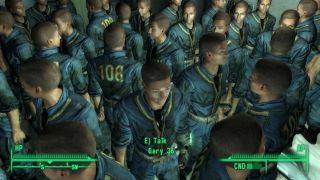
Terminally ill leaders, broken power and cloning (Fallout 3)
It’s not entirely clear what Vault 108 was meant to be testing but it was definitely not good. Its overseer Brody Jones was selected because he was genetically predisposed to a form of cancer expected kill him 40 months after entering the vault. In addition all “standard positions” had been left unfilled, leaving responsibilities and control unestablished. The power was also designed to fail after 20 years. In addition it was also kitted out with state of the art cloning facilities. What any of this was meant to prove was never made clear and the only thing left when it was opened in Fallout 3 were numerous aggressive clones called Gary.
If you want to see where Fallout is going next then check out Fallout 76, where you attempt to reclaim the post-apocalyptic wasteland online with friends.

I'm GamesRadar's Managing Editor for guides, which means I run GamesRadar's guides and tips content. I also write reviews, previews and features, largely about horror, action adventure, FPS and open world games. I previously worked on Kotaku, and the Official PlayStation Magazine and website.
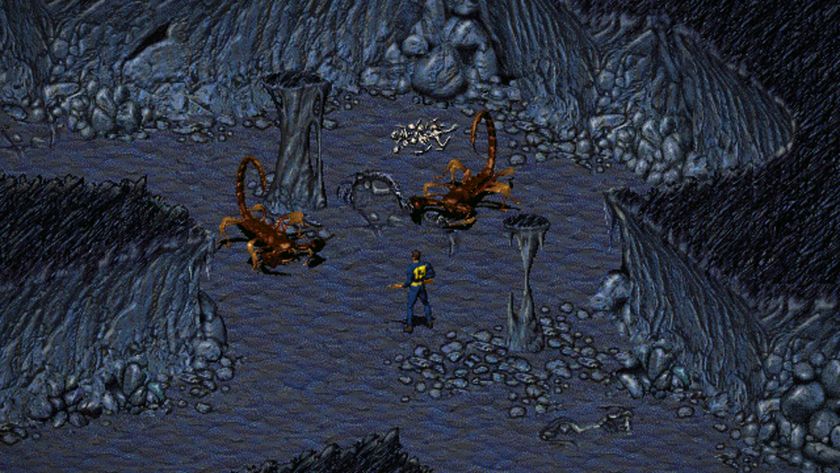
Disco Elysium lead says original Fallout is an RPG "that's almost Biblical in its annihilation," making "other post-apocalyptic worldbuilding seem like an amusement park"
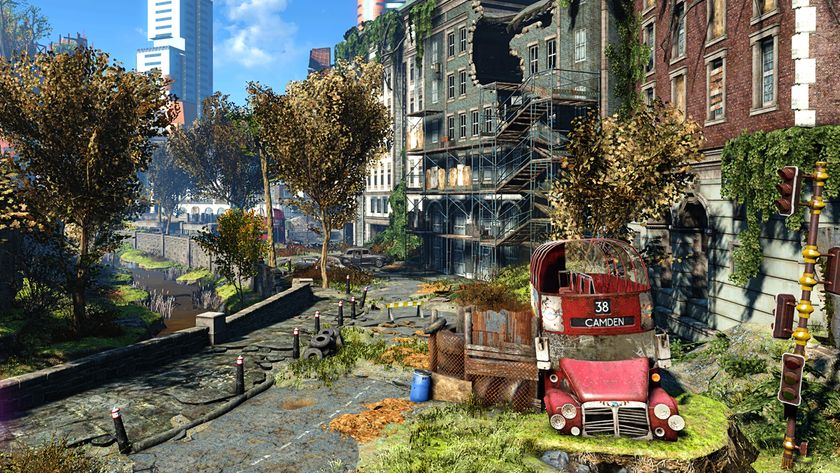
As if Fallout: London wasn't already big enough, its devs now say the mod's "first DLC is getting closer" with "more surprises" to come
Most Popular






